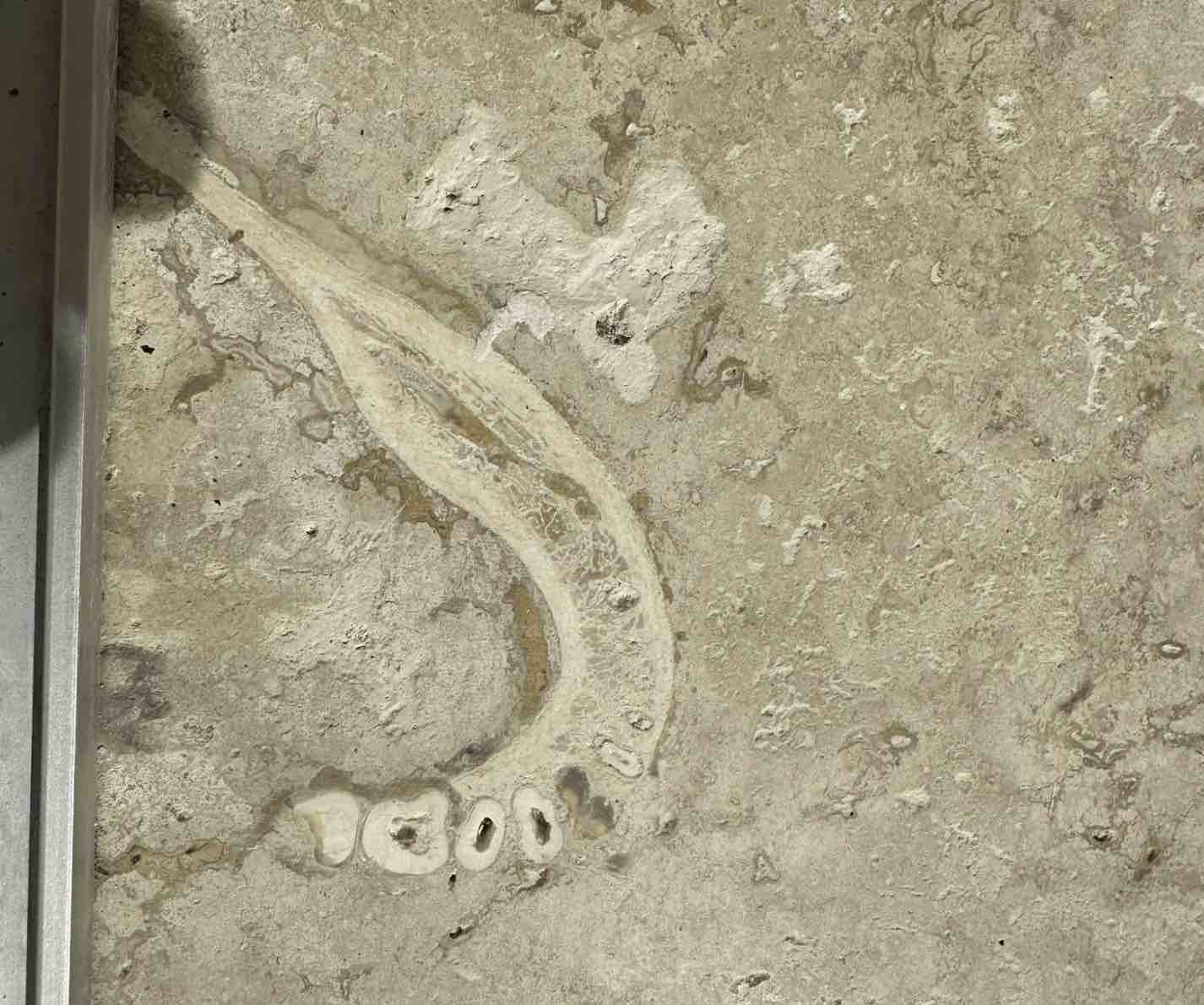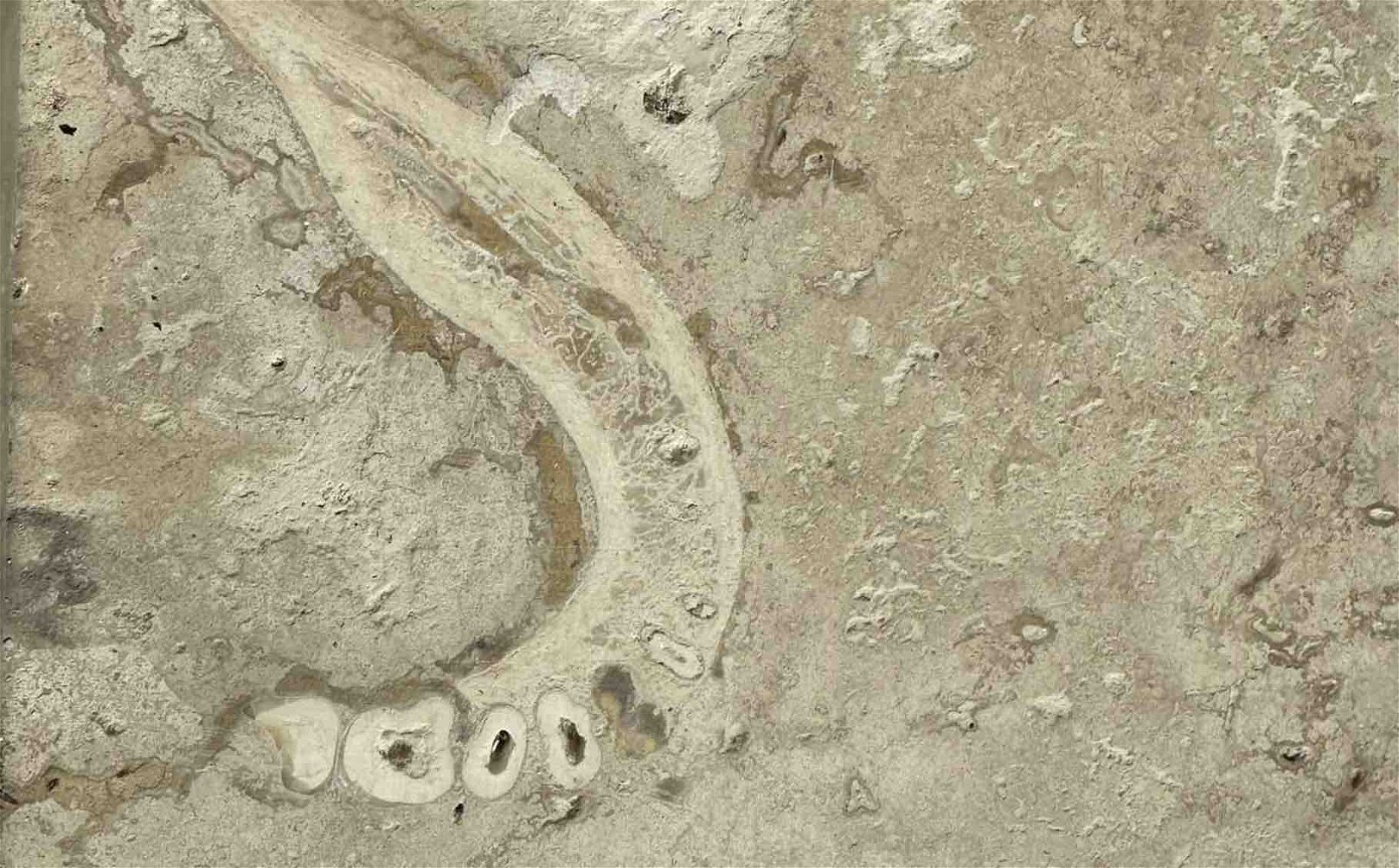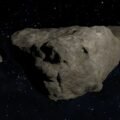Something about one of the floor tiles in his parents’ newly renovated European home seemed extremely strange. That’s because the man who made the discovery, a dentist, recognized the bizarre, out-of-place object he had just found.
The unusual discovery was made when Reddit user Kidipadeli75 noticed a floor tile located in a portion of the home leading out onto a patio area that seemed to have something very strange embedded in it.
Naturally, he did what anyone would do in our modern era of internet sleuthing: he posted an image of the oddity online.
The curious object in the photo appears to be a cross-section of an ancient human mandible with several teeth visible. The Reddit user who made the unsettling discovery has chosen to remain anonymous to ensure his parents’ privacy.
So how, precisely, do human remains find their way into stone flooring tiles?
The portion of the home where the apparent human mandible had been found is composed of travertine, a variety of limestone that, geologically speaking, can form relatively quickly. In this instance, the travertine used in the home renovation had been imported from Turkey and was likely as much as 1.8 million years old.


“Travertine is a type of limestone that occurs in freshwater and terrestrial settings,” according to Dr. Andrew Leier, a geologist and Associate Professor with the School of Earth Ocean, and Environment at the University of South Carolina. In an email to The Debrief, Leier explained that limestone is a sedimentary rock that is composed primarily of the mineral calcite CaCO3.
“When we think of Limestone and CaCO3, we almost always think of the ocean because that is where most of the limestone is precipitated from marine waters. The shells of most clams and oysters are made of CaCO3, as are most corals.
Travertine, by contrast, is different because its formation occurs mostly on land.
“It typically forms near springs, particularly hot springs, as waters emerge from the ground,” Leier told The Debrief. “These waters are saturated with dissolved calcium (Ca) – and when the waters reach the surface the different chemical conditions cause the dissolved Ca to precipitate as CaCO3.”
“In practical terms, what we typically see are widespread laminations or ‘sheets’ of precipitated limestone around the springs. As the waters continue to emerge from the ground, more and more travertine (limestone) is precipitated, forming layer upon layer of this rock,” Leier said.
“You can have several meter-thick buildups of travertine that form over 1000 or even 100s of years. That is a rapid process when compared to most in geology,” Leier added.
In other words, despite the speed at which travertine can form, the human remains discovered in the European home following its renovation represent the fossils of one of our archaic human ancestors preserved in very ancient stone, giving rise to a discovery that has attracted the attention of anthropologists who are reportedly planning to study the unique specimen.
“This naturally raises a broader question,” wrote paleoanthropologist John Hawks in a posting on his website discussing the bizarre discovery. “How many other people have installed travertine with hominin fossils inside?”
Although Hawks says that most fossils that appear in travertine are those of plants, shellfish, and other small animals, these limestone deposits can preserve the remains of much larger animals, which may sometimes include our hominin ancestors.
Hawks references past hominin fossils recovered during archaeological investigations near Bilzingsleben, Germany, where portions of two ancient skulls and a mandible were found preserved in travertine. In another instance from 2002, a cross-section of a hominin skull was found in travertine from Turkey by geologist Mehmet Cihat Alçiçek.
So while discoveries have certainly been made involving human remains in travertine, that isn’t to say that discovering hominin fossils in this way is a common occurrence, according to Leier.
In likelihood, had the Reddit user who made the recent discovery not been a dentist, the mandible he found preserved in his parent’s floor might have gone unnoticed for much longer since the stony inclusions and minor defects that are common in travertine can make spotting any fossils it contains tricky at times.
So if you’ve ever wondered about that odd-looking flaw or defect in the stone floor of your family home, it might warrant a closer look. You might even be walking on a piece of ancient human history.
This article was updated on April 24, 2024, to include quotes from geologist Andrew Leier, Ph.D.
Micah Hanks is the Editor-in-Chief and Co-Founder of The Debrief. He can be reached by email at micah@thedebrief.org. Follow his work at micahhanks.com and on X: @MicahHanks.

